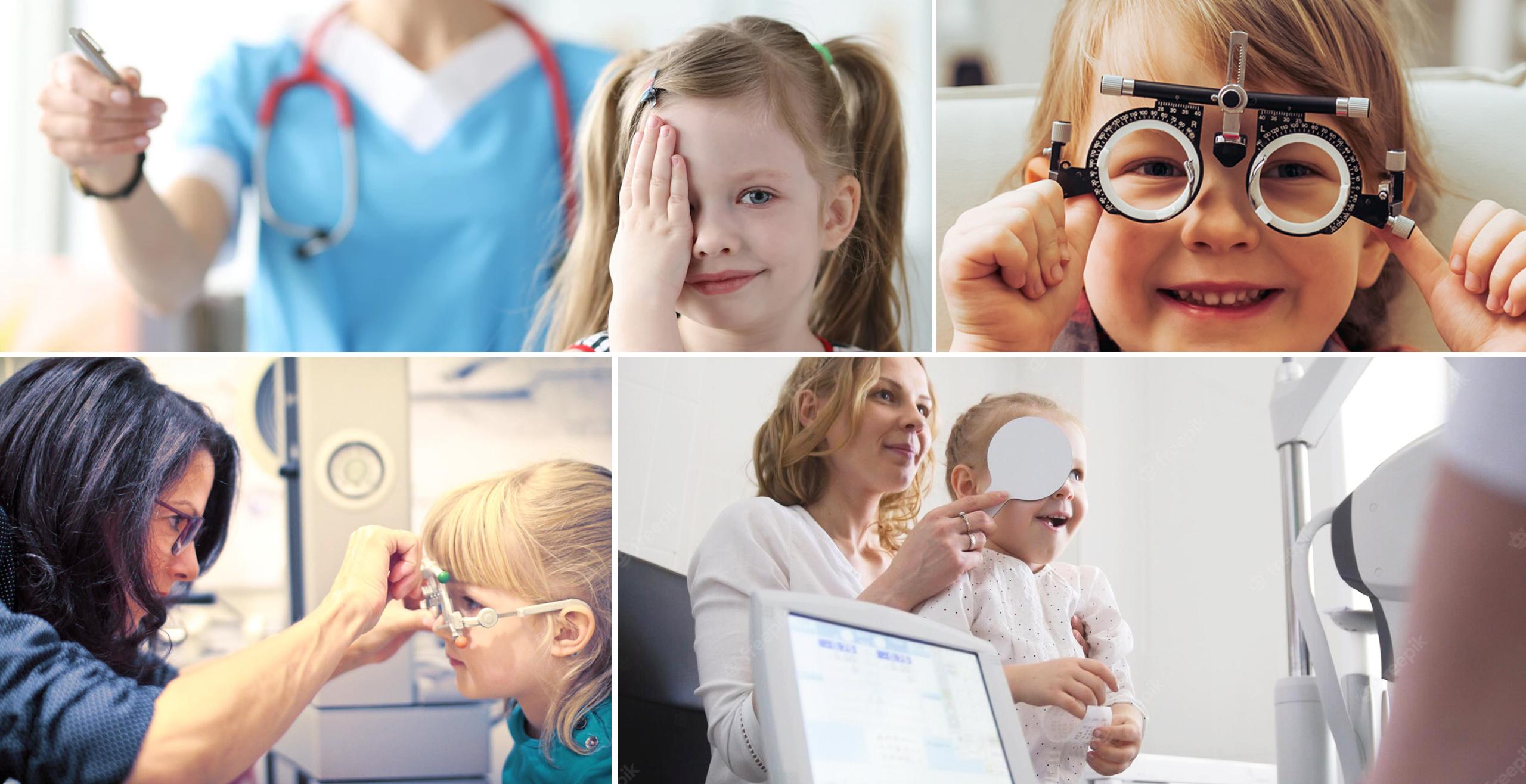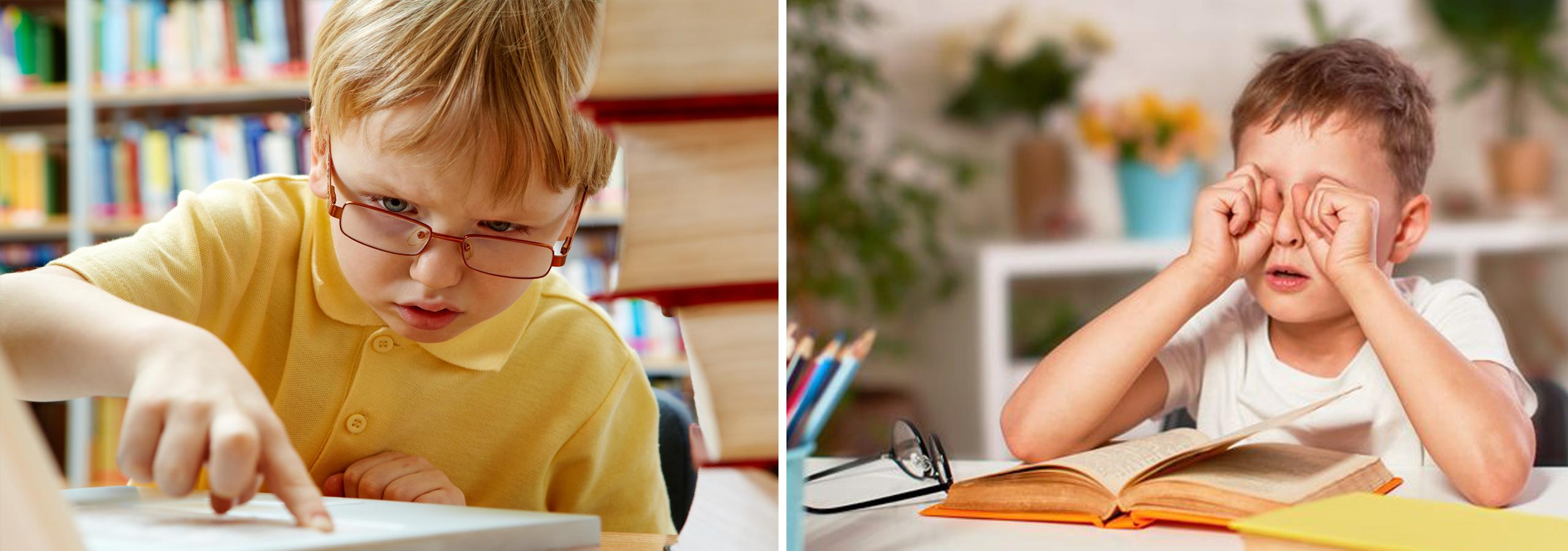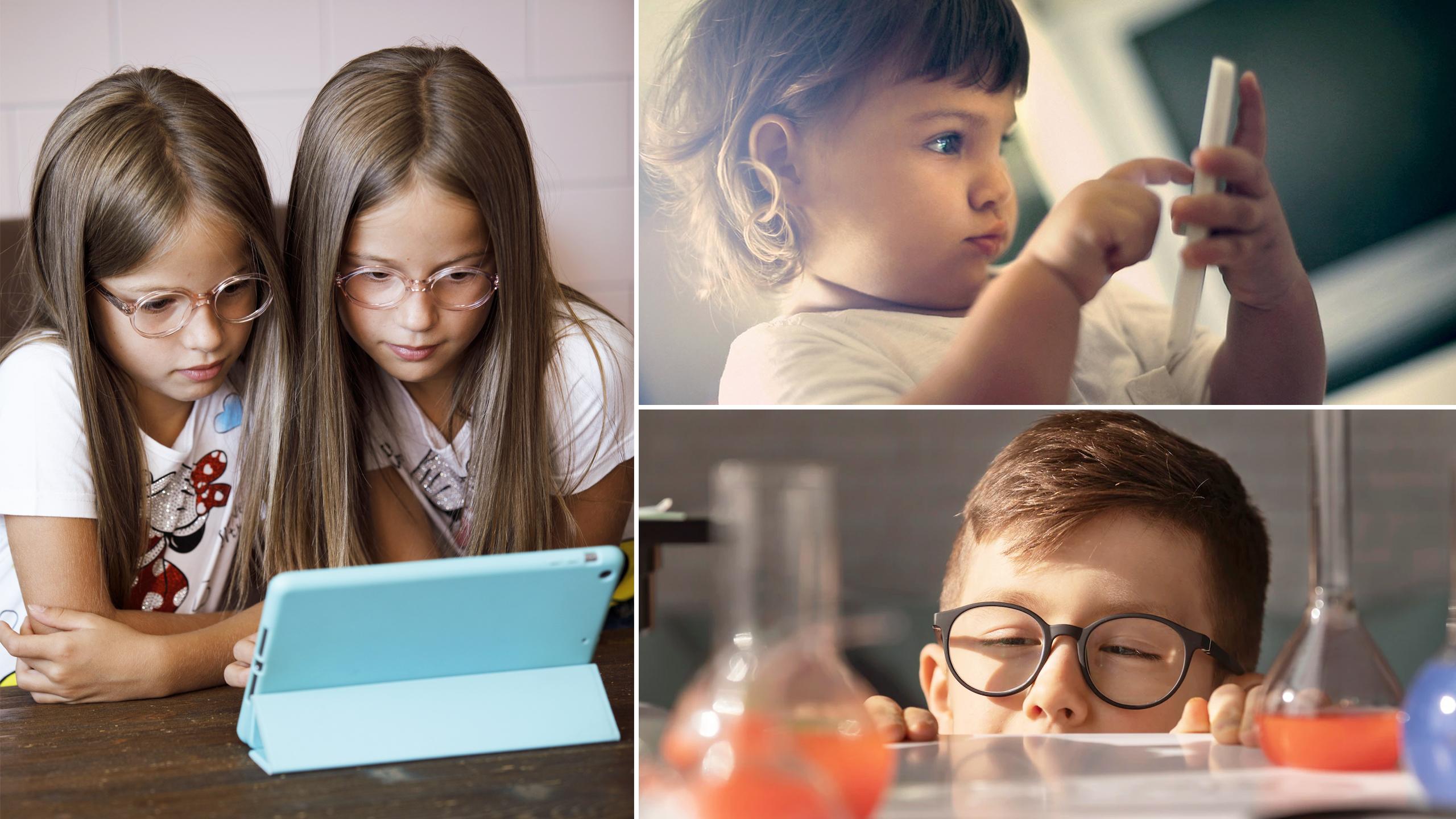When children’s EYES exam is needed?!

⏱️ 04:20 MINUTES OF READING
Despite all the attention that we give to our children, sometimes they encounter obstacles or problems in their life that they need to deal with and accept. With you by their side though, everything will be easier.
One of the things that is important to monitor since the first few months of life is the child’s sight. Why is it important to have an eye examination in the first years of life? Though newborn babies are able to see, they are not able to focus their eyes yet. Their vision develops in a subsequent period and for this to happen correctly, the brain NEEDS to receive clear images from both eyes. If that doesn’t happen, their vision can be compromised, even severely in some cases.
Being able to see well is a matter of the utmost importance. Imagine having to grow up in a blurry world, difficult to understand and especially recognise because it is not clear, perhaps with frequent ailments and unavoidable discontent. It’s important to remember that sight is one of the 5 senses and, in particular, it is the one which plays a decisive role in the child’s psychomotor development, especially in the first 10 years of age. Sight is a FUNDAMENTAL sense on which concentration, lucidity and efficiency depend; abilities that are indispensable to live life to the fullest.
The eyes of children are important to us. That is why we want to sensitise you to some signs in the child’s behaviour which could be the consequence of a sight defect.

The first thing a parent has to check in a newborn, at around 3 months, is whether his eyes are aligned properly, as even the smallest misalignment could be the sign of a sight defect that needs to be corrected. Or also if the child’s eyes are too big or too small, if one eyelid is lower than the other, an iris with irregular shape or colour. It would even be good practise to prepare in advance for an examination if during pregnancy the mother contracts infectious diseases such as rubella, toxoplasmosis, etc, or if the baby has some pain during childbirth.
If a parent suffers from diseases like retinitis pigmentosa, strabismus, congenital cataracts, congenital glaucoma (just by reading them you get scared, don’t you? All these strange words!), also the child could be afflicted by them as a result. It is precisely for this reason that they should always be taken into account and monitored. Of course, it often happens that these diseases are not triggered, but it is still important to have periodic check-ups.
It’s also important to monitor posture and behaviour in a young child. Starting from 3 months of age, if he struggles to follow an object moving slowly or if he has difficulty grabbing objects, these could be the sign of a vision defect, especially if the behaviour does not change in the following months. It is appropriate to see a doctor if the child falls frequently or has difficulty in avoiding obstacles.
Pay attention also when he watches TV or reads a book. If he sits too close to the TV or puts the book closer to the face to read better, he could suffer from myopia.

When children learn to read, they often use their finger to keep track of the line they are reading, in particular the words. If he keeps using this system also in the following phases, try asking him to read without following the text with his finger. This method will allow you to understand if it is just a habit or if he frequently loses track of where he was reading. In the latter case, an eye examination is appropriate.
Does your child close an eye and use only one of his eyes to watch TV or read or when sitting at the computer? This behaviour could indicate a refractive or binocular vision, connected with convergence insufficiency.
Another sign that sometimes indicates a sight defect is the rubbing of the eyes. It may happen that during the day your child rubs his eyes with his hands. It is normal if this happens when he is tired or bored, but if he rubs his eyes when trying to focus or read or during any other activity, it is very likely that his vision is causing him trouble and discomfort. This is also true for children with a high tear flow, which can be noticed by residues of secretions on eyelids and eyelashes, or children with excessive sensitivity to artificial or natural light. In some cases, these problems could even lead to recurrent migraines.
Be careful though! Also school marks are always a sign of something else! Indeed, children are like small champions who would never dream of disappointing us, so if your child starts bringing home worse marks than usual, then it could be caused by the inability to see the blackboard well. Probably, if he is not able to see well what the teacher writes, his notes and learning will decrease and almost certainly, because of pride, he won’t tell you what happens in the classroom. Do not hesitate to ask their teachers for help. As they spend a lot of time with our children, they should already be used to some of the behaviour of their students, so ask them how your child behaves in class while he looks at the blackboard or tries to read. If he squints or tilts his head to one side, then it is clear that he has some difficulty which needs to be evaluated by an eye doctor. In the meantime, ask the teacher to move him closer to the blackboard. Alternatively, you can do some tests at home. It’s your choice.

Let’s talk now about the child’s diet! You are probably wondering what food has to do with eyes and sight. It may happen that a diet rich in sugars leads to a high insulin level, which sometimes affects the quality of the child’s sight. In this case, a healthy diet that limits gluten and sugary foods can produce a significant improvement, without having to resort to eyeglasses and corrective lenses.
We all know that sight plays an important role in everyone’s life and that it allows us to develop our confidence and independence. Wearing eyeglasses to correct a sight defect could look bad at the beginning, but over time, they will become like travel companions that you will always want close! In fact, you need to choose them carefully. Some sight defects can be corrected and eliminated, others, instead, will always accompany your child. What’s important is to act immediately, so that your child will be able to look at the world around himself and see it alive, full of bright colours and rich in nuances.
Advice:
We live today in a new era. Even at a young age, children are constantly using electronic devices such as PCs, tablets, mobile phones and Smart TVs which tire their eyes all the time. The actual culprit of all this is BLUE LIGHT. Try then not to expose your children to these devices too much in order to avoid long-term damage that is still partly unknown. We will talk about this problem more in detail in the next article. Stay up to date… 🙂
Check out our blog and stay up to date with the latest news!